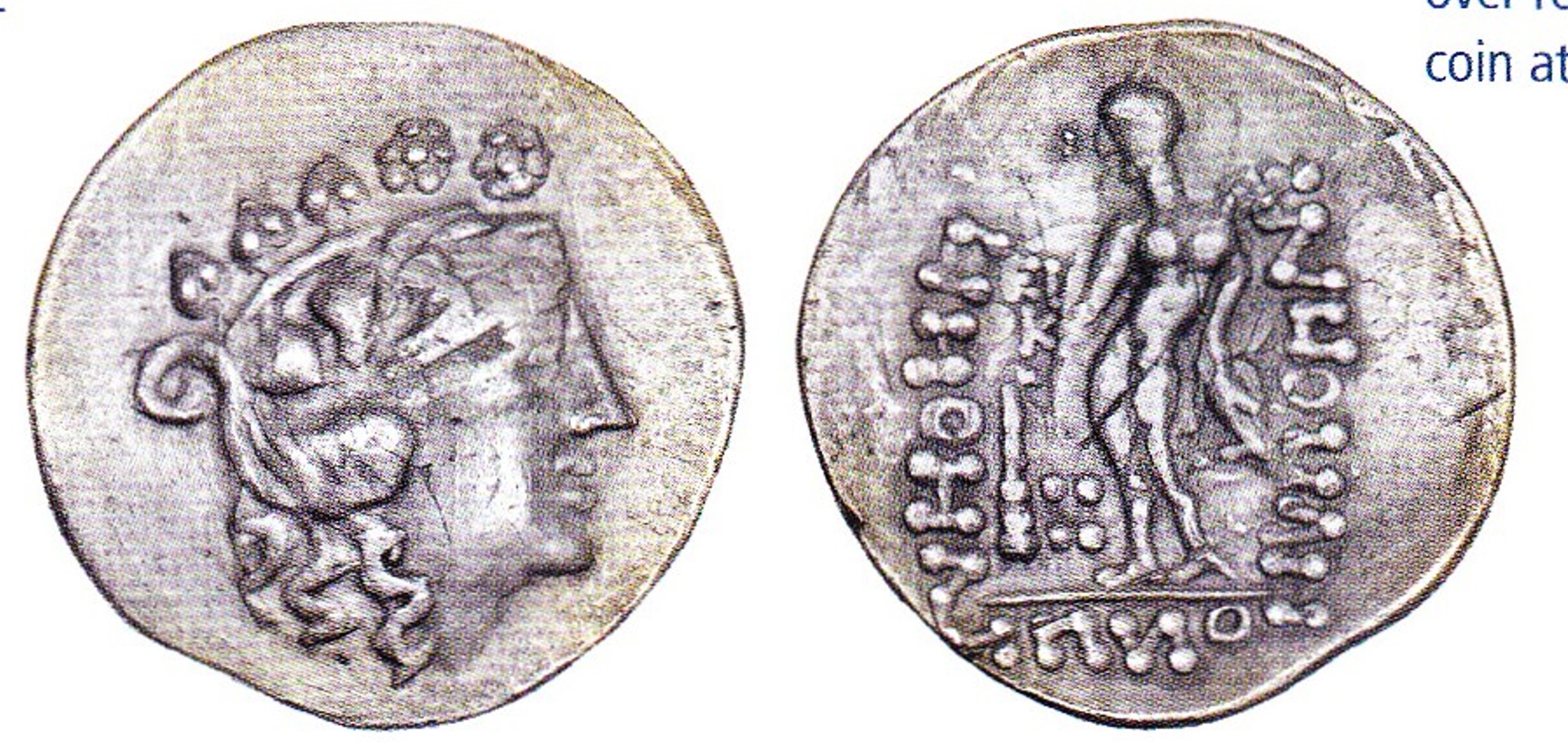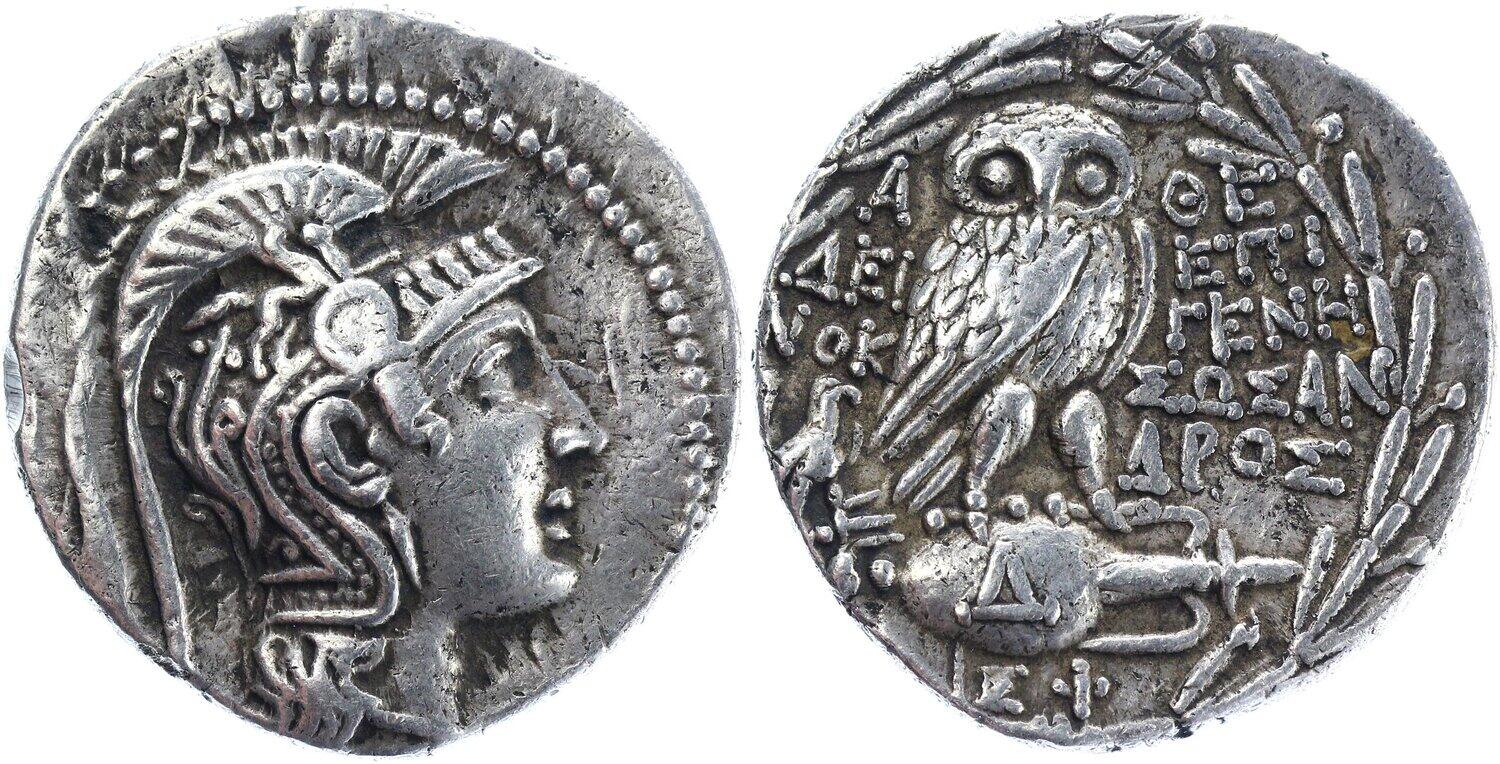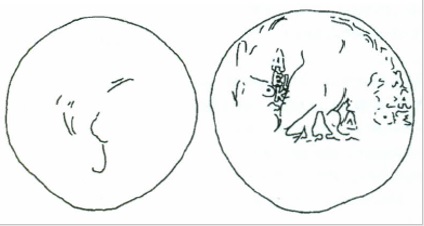70 BCE - 50 BCE | ΗΡΑΚΛΕΟΥΣ / ΣΩΤΗΡΟΣ / ΘAΣIΩN
Overstriking coin
Thasos on Athens - MacDonald 2009, 105.jpg
Overstruck variety
Thasos on Athens - MacDonald 2009, 105 overstruck variety.jpg
[1]
Thasos on Athens - MacDonald 2009, 105 overstruck variety visible on the overstriking coin.jpg
Description
| ObverseInscription or printing placed on the obverse.:
|
Wreathed head of young Dionysos right
|
ReverseInscription or printing placed on the reverse.:
|
ΗΡΑΚΛΕΟΥΣ / ΣΩΤΗΡΟΣ / ΘAΣIΩN (Greek) Herakles standing left, nude but for lion's skin over his shoulder and left arm, resting right hand on club, in the inner left field, monogram
|
Mint and issuing power
| MintIdentifies the place of manufacture or issue of a numismatic object.:
|
Thasos
|
Ancient regionAncient region.
|
Thrace
|
Modern countryModern country: Greece
|
AuthorityIdentifies the issuing power. The authority can be "pretended" when the name or the portrait of X is on the coin but he/she was not the issuing power. It can also be "uncertain" when there is no mention of X on the coin but he/she was the issuing power according to the historical sources:
|
Roman Republic
|
Chronology
| FromIdentifies the initial date in a range assigned in a numismatic context. 70 BCE toIdentifies the final date in a range assigned in a numismatic context.. 50 BCE
|
Hellenistic 323-30 BC  periodTime period of the numismatic object. periodTime period of the numismatic object.
|
Physical description
MetalThe physical material (usually metal) from which an object is made.: Silver 
|
WeightWeight of the numismatic object (in grams). in grams: 16.1316.13 g <br />16,130 mg <br />
|
DenominationTerm indicating the value of a numismatic object. Examples: tetradrachm, chalkous, denarius.: tetradrachm 
|
AxisDescribes the directional relationship between the obverse and reverse of a numismatic object.: 1212 mm <br />1.2 cm <br />
|
|
|
StandardStandard.: Attic
|
References
| Coin referenceReference of the Coin:
|
MacDonald 2003, n° 2, MacDonald 2009, n° 105, Callataÿ 2021a, p. 283, n° 27
|
Coin series referenceReference to coin series study:
|
Lukanc 19961Lukanc 1996, p. 103, n° 1202, MacDonald 20032MacDonald 2003, n° 2, MacDonald 20093MacDonald 2009, n° 105, Callataÿ 2021a4Callataÿ 2021a, p. 283, n° 27
|
Description
| ObverseInscription or printing placed on the obverse.:
|
Head of Athena right, wearing crested Attic helmet ornamented with three laurel leaves and vine scroll
|
ReverseInscription or printing placed on the reverse.:
|
EPIGENHS-SWSANDROS (Greek) Owl standing facing on amphora to right, symbol to right, letter on amphora, all within olive wreath
|
Mint and issuing power
Chronology
| FromIdentifies the initial date in a range assigned in a numismatic context. 126 BCE toIdentifies the final date in a range assigned in a numismatic context.. 125 BCE
|
Hellenistic 323-30 BC  periodTime period of the numismatic object. periodTime period of the numismatic object.
|
Physical description
| DenominationTerm indicating the value of a numismatic object. Examples: tetradrachm, chalkous, denarius. ᵖ:
|
tetradrachm 
|
StandardStandard. ᵖ:
|
Attic
|
References
 Traces of the overstruck variety
Traces of the overstruck variety

